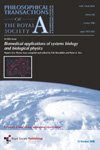Risk assessment of radioisotope contamination for aquatic living resources in and around Japan
- Edited by David Cox, Nuffield College, Oxford, United Kingdom, and approved January 26, 2016 (received for review October 6, 2015)
Significance
Quantification of contamination risk caused by radioisotopes released from the Fukushima Dai-ichi nuclear power plant is useful for excluding or reducing groundless rumors about food safety. Our new statistical approach made it possible to evaluate the risk for aquatic food and showed that the present contamination levels of radiocesiums are low overall. However, some freshwater species still have relatively high risks. We also suggest the necessity of refining data collection plans to reduce detection limits in the future, because a small number of precise measurements are more valuable than many measurements that are below detection limits.
Abstract
Food contamination caused by radioisotopes released from the Fukushima Dai-ichi nuclear power plant is of great public concern. The contamination risk for food items should be estimated depending on the characteristics and geographic environments of each item. However, evaluating current and future risk for food items is generally difficult because of small sample sizes, high detection limits, and insufficient survey periods. We evaluated the risk for aquatic food items exceeding a threshold of the radioactive cesium in each species and location using a statistical model. Here we show that the overall contamination risk for aquatic food items is very low. Some freshwater biota, however, are still highly contaminated, particularly in Fukushima. Highly contaminated fish generally tend to have large body size and high trophic levels.
Footnotes
- 1To whom correspondence should be addressed. Email: okamura@fra.affrc.go.jp.
- Author contributions: H.O. designed research; H.O. performed research; H.O., S.I., T.M., and S.E. contributed new reagents/analytic tools; H.O. analyzed data; and H.O., S.I., T.M., and S.E. wrote the paper.
- The authors declare no conflict of interest.
- This article is a PNAS Direct Submission.
- See Commentary on page 3720.
- This article contains supporting information online atwww.pnas.org/lookup/suppl/doi:10.1073/pnas.1519792113/-/DCSupplemental.
Freely available online through the PNAS open access option.
'via Blog this'









No comments:
Post a Comment
Comments, questions and/or suggestions welcome. If I can be of further, more focused assistance, do not hesitate-ask. Comments are moderated to assist further enquiry and assistance.